Stunning beaches, soaring cliffs, wombats and heritage are all part of this amazing landscape
The place offers such a sense of pristine isolation that it is hard not to be moved by the sensory experience – the visual splendour and the briny nearness of the sea, with its masses of life.
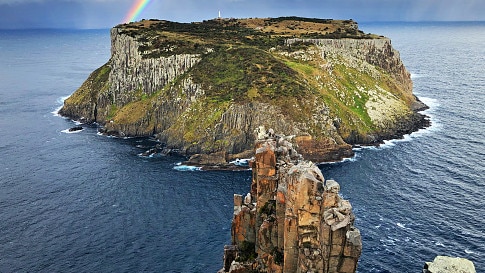
Over Maria Island way, snow clouds are amassing. “It’ll be snowing somewhere near here tonight,” says our guide, Peter Marmion, his face breaking into what can only be described as a Tasmanian grin, as if the devil truly is in him. “Look at the edges of those clouds. Yep, there’s snow coming.”
To be honest, this seems highly improbable. We are walking down one of the most beautiful beaches anywhere in Australia, a thin cove of virgin sand edged by aquamarine water so clear and blue it could be the Whitsundays. On the dunes, spring wildflowers in pink and yellow are popping out, their waxy faces turned upwards towards the bright October sunlight. It is – almost –warm. “Just wait for it,” says Marmion gleefully.
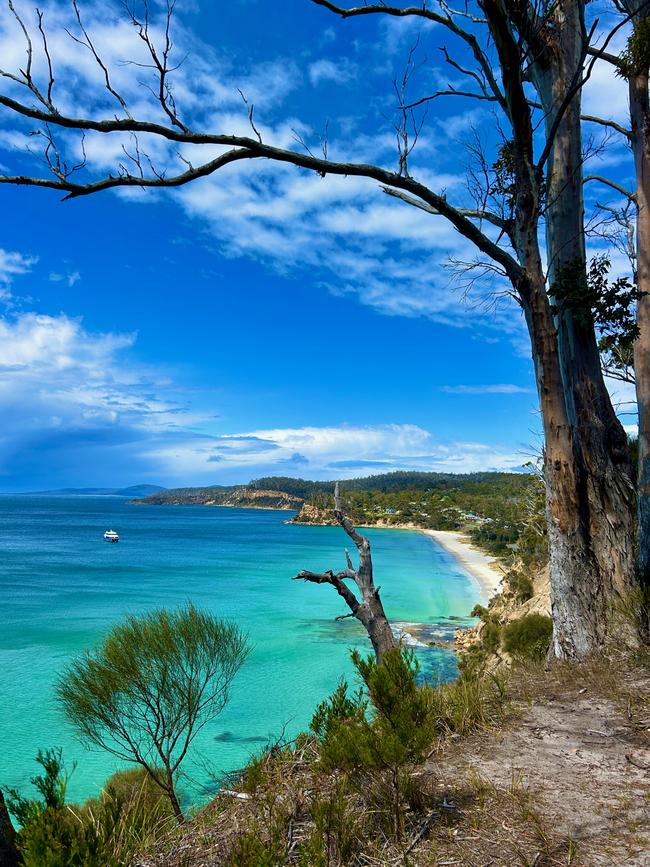
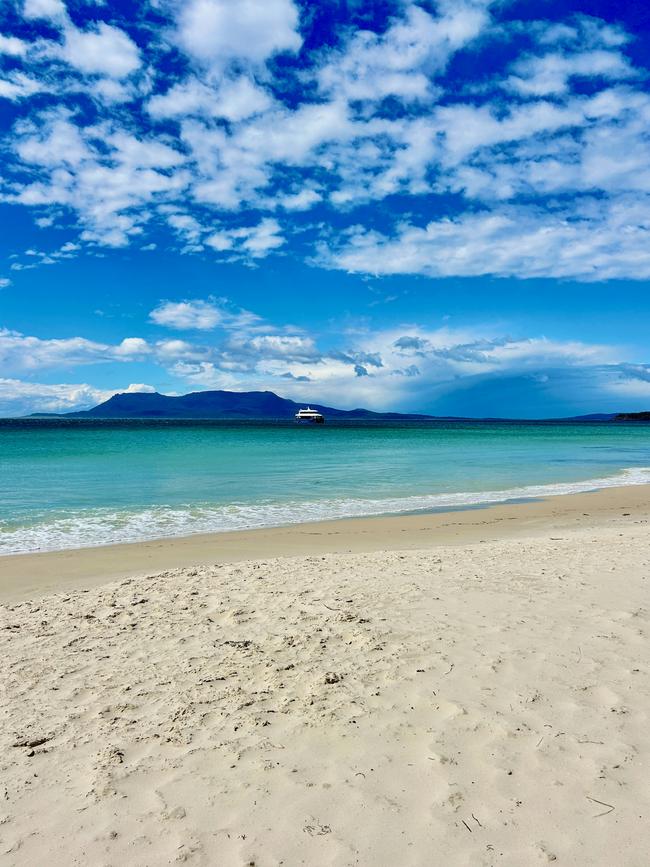
He knows these parts as well as anyone, and as we head through the ancient eucalypt forest towards the jetty that will collect us and take us back to the Odalisque, the luxury catamaran that’s our temporary home, spits of something cold start falling from the sky. If it’s not quite snow, then it is most definitely sleet.
Not that it detracts from the walk, or the scenery. Rather, as we pull our beanies back on our heads and tramp through the fragrant bush, the spirit of the wilderness feels strong around us. Off the beaten track? This is it.
We are at Spring Bay, midway through a four-night journey on the East Coast Expedition trip with On Board Expeditions, a Tassie cruise company that takes small-group eco-journeys to some of the most inaccessible destinations on this amazing stretch of coastline.
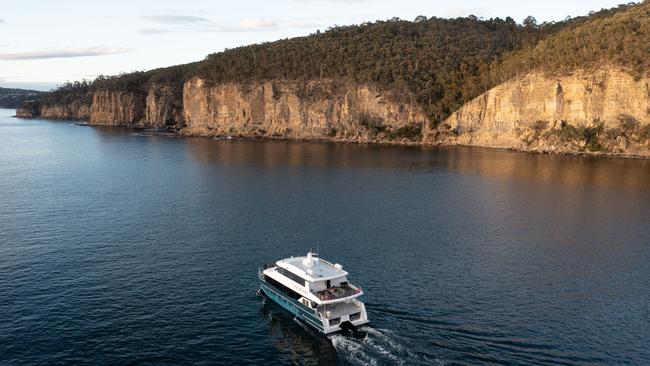

Already we have cruised past some of the island’s – indeed, the nation’s – most spectacular coastal formations, most notably the extraordinary sea cliffs around Cape Pillar, a collection of dolerite columns that rise suddenly and hugely out of the cold sea like the tombstones of giants. Soaring to 300m at the highest point, the cliffs are geological marvels best seen by sea, especially on bright days when their surfaces shine with rust-coloured lichen that glows eerily in the sun.
On the rocky shoreline, seals clap and feed, while seabirds including albatrosses and sea eagles soar overhead, their keen eyes turned towards the deep blue Tasman waters teeming with squid and tuna.
As the boat traverses the choppy passage between a knife-like rocky structure known as The Blade and the tabletop Tasman Island with its natty lighthouse, you’re like Abel Tasman himself, discovering this distant land that feels rather like the last place on the map of Van Diemen’s Land. Next stop: Antarctica.
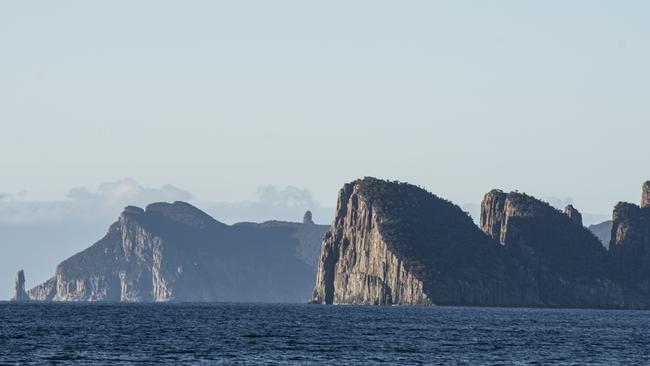
Indeed, the sense of Antarctica looms large here. Freezing winds whip along the ocean from the south, bringing with them biblical waves and lashing rain. But the place offers such a sense of pristine isolation that is hard not to be moved by the sensory experience – especially the visual splendour of the landscape and the briny nearness of the sea with its masses of life: whales and dolphins, of course, but also marauding seals pups that come to play in the bow wave of the catamaran, and leaping tuna that dart around the vessel.
We have come around the coastline to Cape Pillar and its dramatic sister structure, Cape Raoul, from the calmer waters of Port Arthur. I first visited this long-time penal colony as a young person a year before the 1996 massacre that changed the nation, and have vivid memories of its spectral power. So to see the ruins again after almost 30 years feels somehow personal.
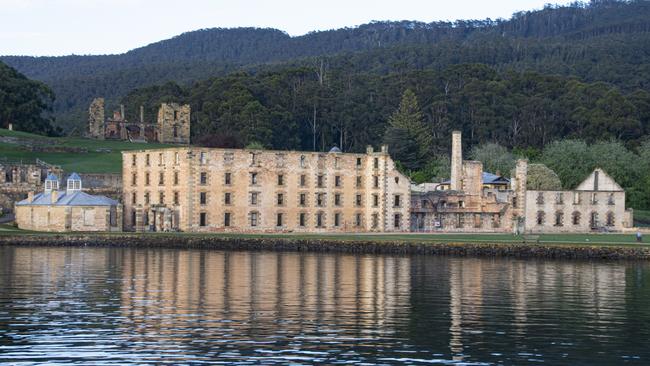
Of all the nation’s heritage sites, Port Arthur has some of its darkest history – a place where from 1830 the most hardened and recidivist convicts were sent to be reformed, punished, or in some way bent to the will of the English colonisers and jailers who delighted in brutalising them. After the settlement was abandoned in 1877, such was the shame surrounding its history, it was simply left to turn to ruins.
These days you can wander through the ghostly remains of the old church, the cells where newcomers were housed (now reconstructed to tell some of the stories of the unfortunate inhabitants) and, most creepily, the pitch-black isolation chamber so frightening that prisoners interred here were often moved straight to the lunatic asylum next door after they were let out.
For all its horrible history, Port Arthur is extravagantly beautiful. The main prison building, originally constructed as a flour mill, glimmers exquisitely in the dawn light in its waterside location not far from a grove of blue gums; it is weird to think such terrible deeds occurred in such a glorious spot.
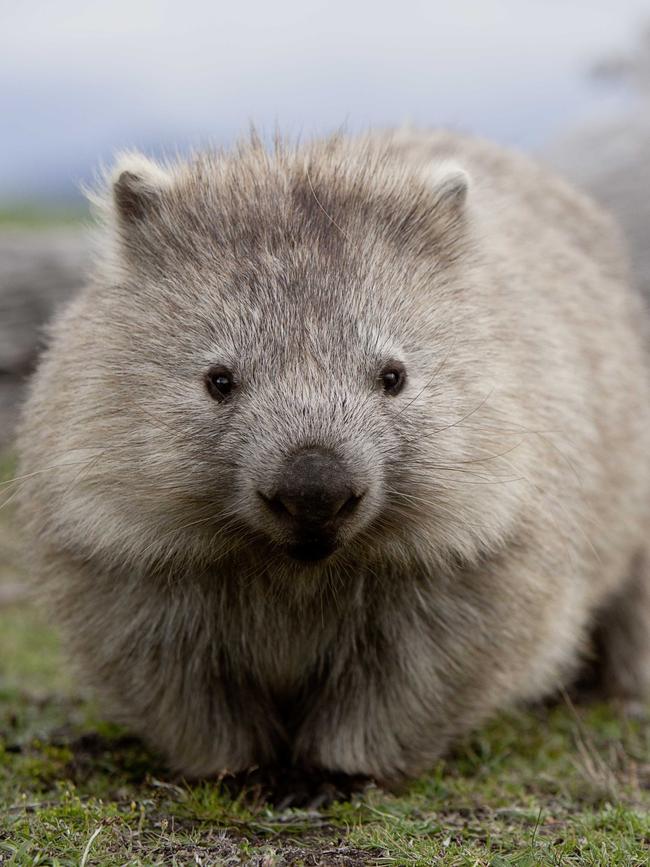
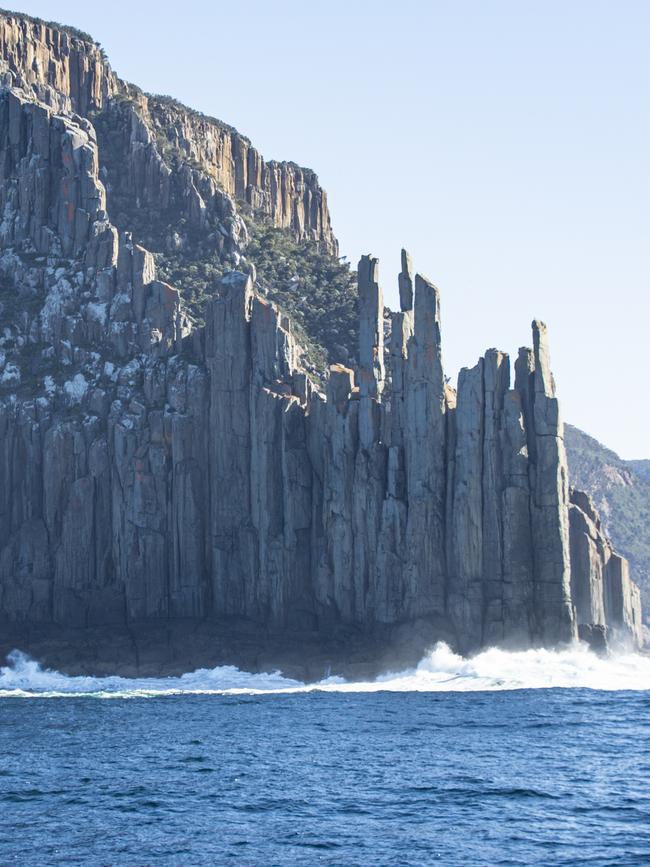
We move onto other stopovers of interest. Nearby is Maria Island, another former penal colony now serving mostly as a wombat sanctuary. Pulling into shore, we wander fields dotted with plump fluffy wombats that run across the grass like hairy piglets, see mobs of lazy Forester kangaroos – and through the bush I spot the tail of something I’m choosing to believe is a Tassie devil (even if Marmion tries to brush it off as a pademelon). Plus an aviary’s worth of birds, big and small, many full of gorgeous song.
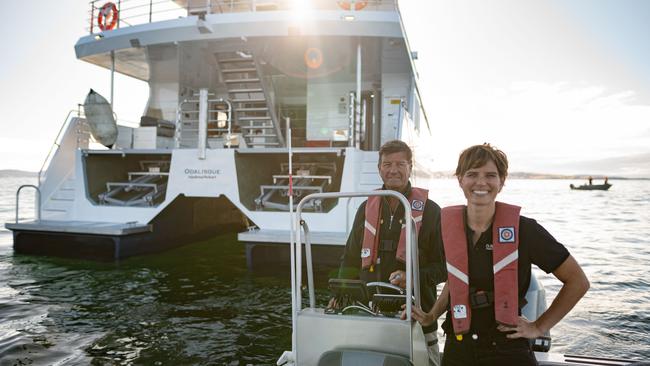
Over five days, there is plenty of opportunity for fishing for squid and flathead off the back of the boat, for long walks on the beach, guided bushwalks and coastal cruises in the tinnie with skipper Pieter van der Woude, the founder On Board. Van der Woude is as generous with his time and knowledge as Marmion; between them, they ferry guests from cove to beach to artefact with diligence and good humour, Marmion imparting an endless stream of dad jokes as he educates and yarns, van der Woude rigging the fishing rods.
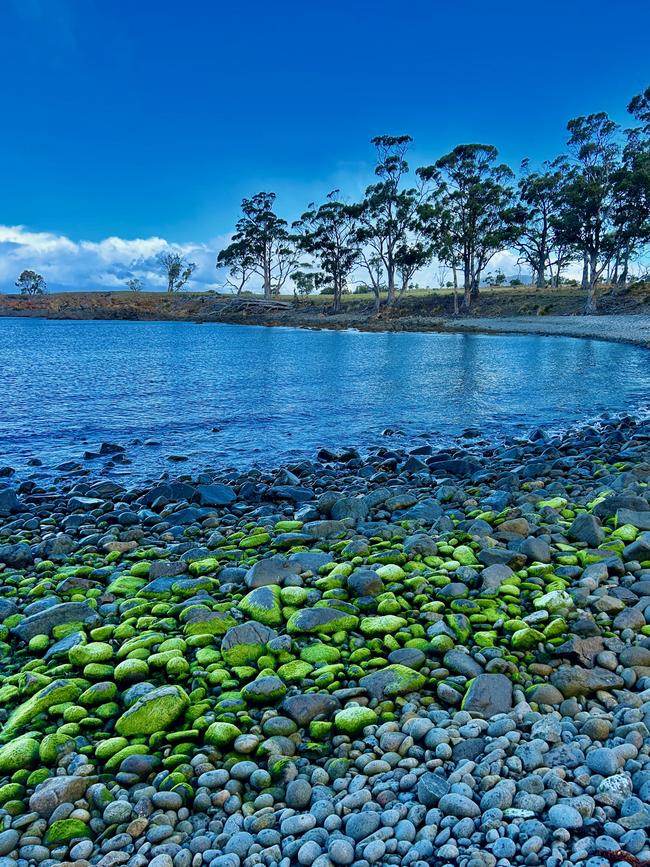
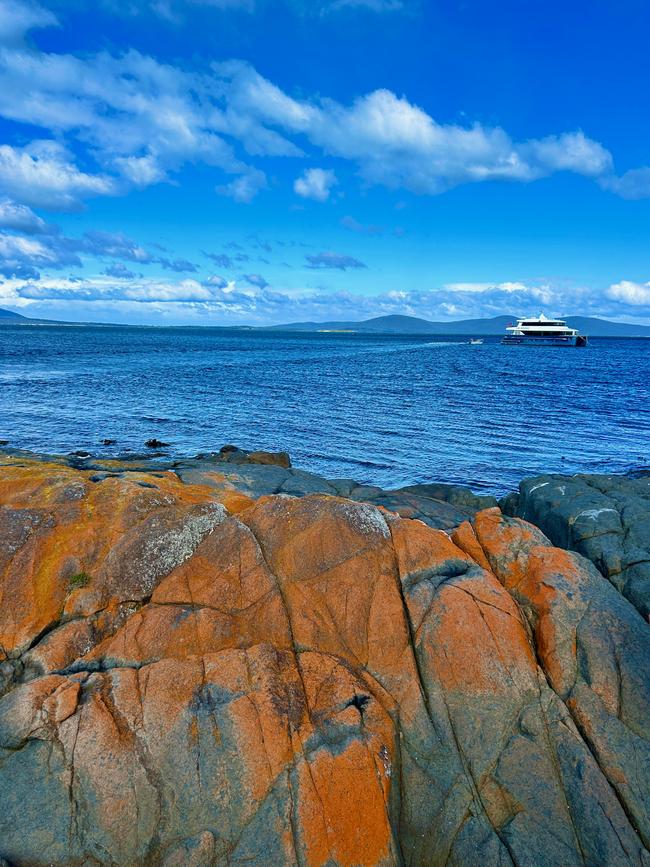
The opportunity to see this rugged and remote wilderness up close and personal like this is rare and precious. It should be on the bucket list of every Australian; if it’s not on yours, put it on there.
Checklist
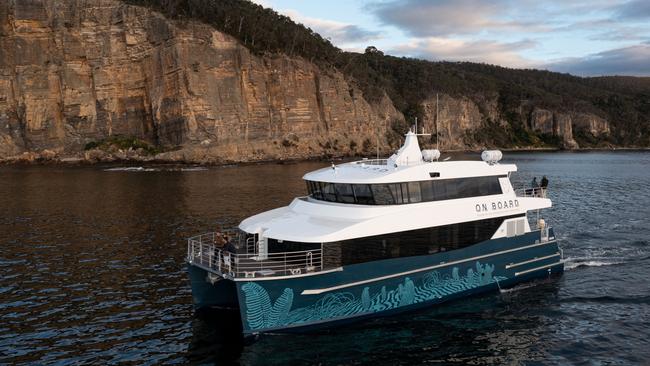
Getting there: On Board’s four-night East Coast Expedition leaves from Hobart’s Elizabeth Street Pier. The catamarans are well appointed, accommodating only 12 passengers per journey. The staff-to-guest ratio is high, almost one staff to two passengers, ensuring every guest is highly catered to; a guide is on every cruise. The cabins are snug rather than roomy but have incredible full windows for viewing the landscape without leaving bed, if that’s your thing. The staff will even drop off a tea or coffee so you can watch the scenery in repose. Cruises start at $10,300 with all meals, drinks including local Tassie wine, equipment, guided tours and excursions included. The exact route each cruise takes is dependent on the weather – specifically the sea conditions and the wind. Some lucky east coast cruisers get to go as north as Wineglass Bay in Freycinet National Park, but the weather gods did not permit this for us. Nevertheless we got a good look at many of the beautiful local sites. On Board also does wilderness cruises to Tasmania’s fabled west coast. The Port Davey Expedition (from $11,600) is a popular trip. onboardexpeditions.com.au
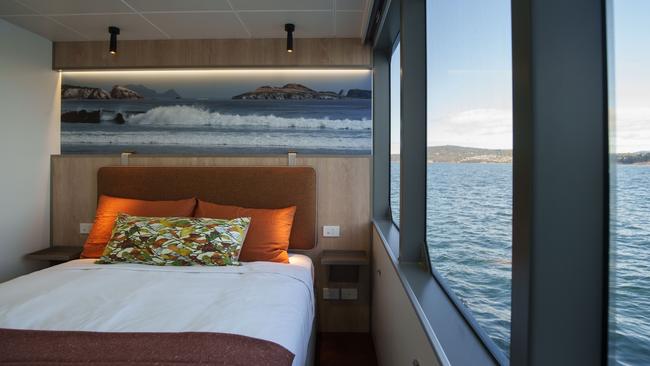
Eat: All food and drink is included in the expedition with chef Thomas Snowball doing a cracking job providing high-quality meals that span the bridge between restaurant fare and country home cooking, across breakfast, lunch, canapés and dinner. Indeed, the food and wine service – focused on Tasmanian produce – is part of the pleasure of this trip.
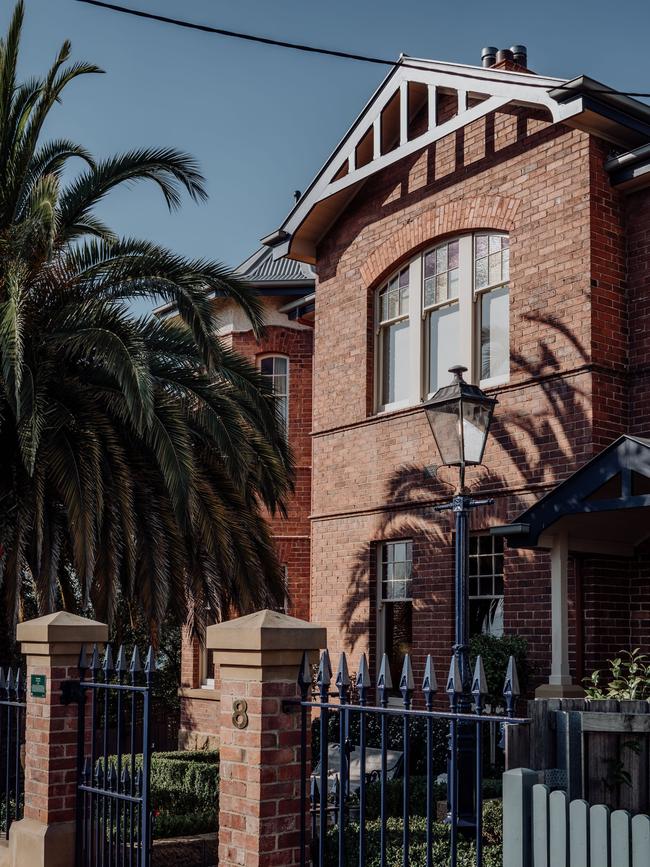
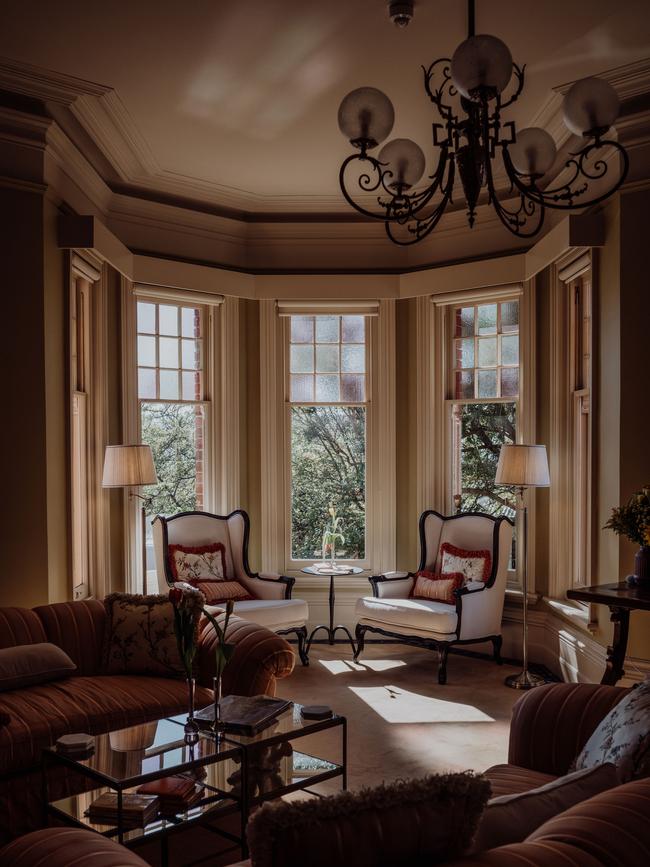
Stay: Hobart is a gem of a city, filled with history and lore. Finding bijou accommodation dotted around the heritage neighbourhoods is part of the fun of staying here. As the On Board cruises depart early and return late, it is advisable to book accommodation around your stay. Delightful is Grand Vue Hotel in Battery Point, a boutique property inhabiting a 1906-built Queen Anne-style mansion. Run like an English guest house, the abode has a variety of restored heritage-style rooms, several with views of Sandy Bay and Mount Wellington. Guests are given free rein of the house, with the kitchen stocked with fresh cakes and biscuits, juice, cereal, bread, coffee and other provisions. Help yourself to afternoon tea and breakfast, being sure to have it in the charming drawing room or formal dining space. It’s gorgeous and beautifully hosted; the lovely owner Ash will check in with you via text to be on hand for your arrival. Fom $330; grandevuehotel.com.au


To join the conversation, please log in. Don't have an account? Register
Join the conversation, you are commenting as Logout